- Financial Resources
- Blog
Blog
Your Weekly
Financial Forecast
Stay informed with sound financial know-how
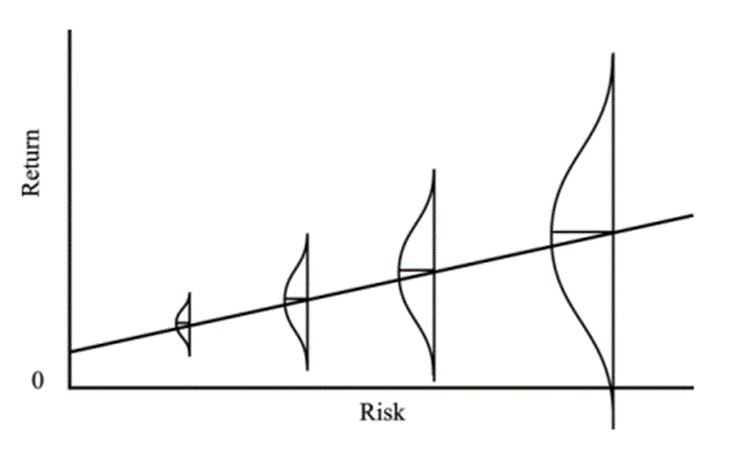
7 Investment Concepts
Top 7 Investment Concepts by Samuel A. Kiburz:
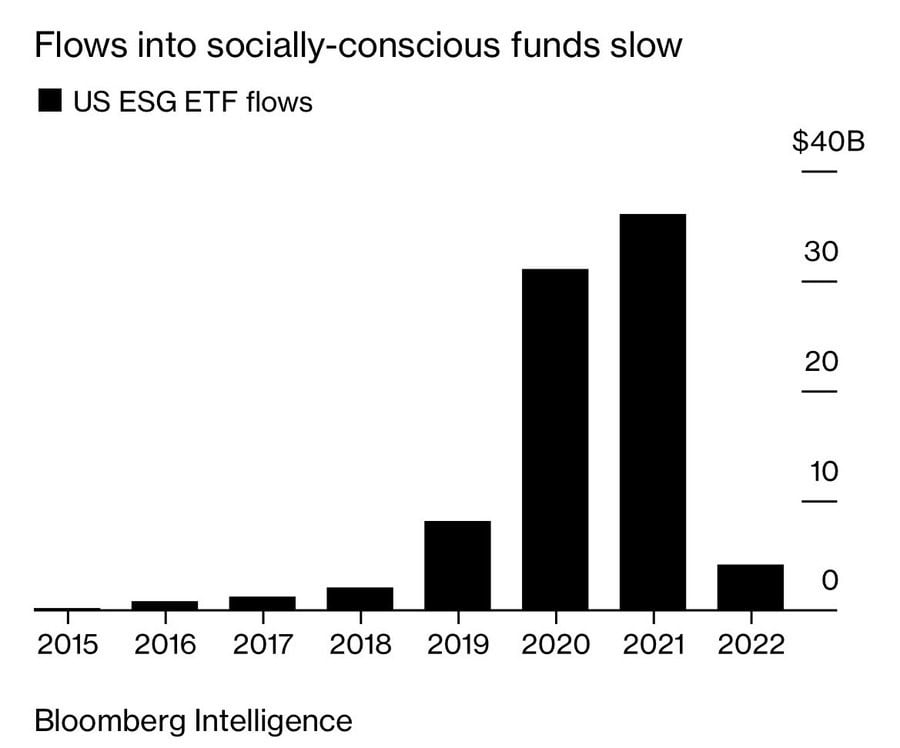
The Shying Away from ESG
Today's chart is from Bloomberg Intelligence, which shows the money flows into ESG (Environmental, Social, and Governance) ETFs since they appeared..
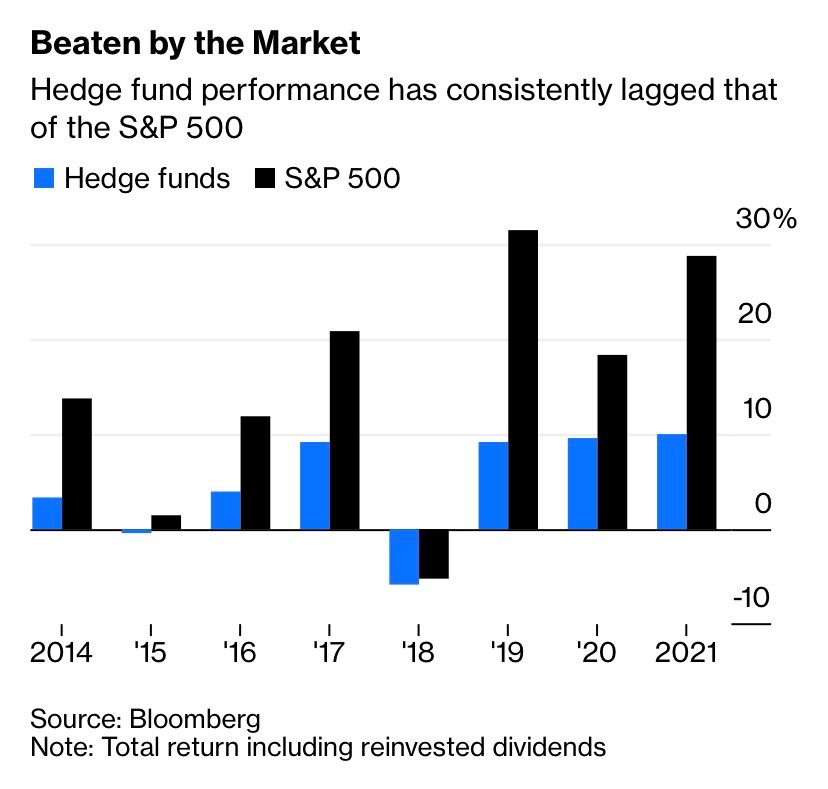
No More Heydays for Hedge Funds
People may ask, “Why not use hedge funds?” Today's chart comes from Bloomberg and shows us the reason why. In addition to their typical expense ratio..
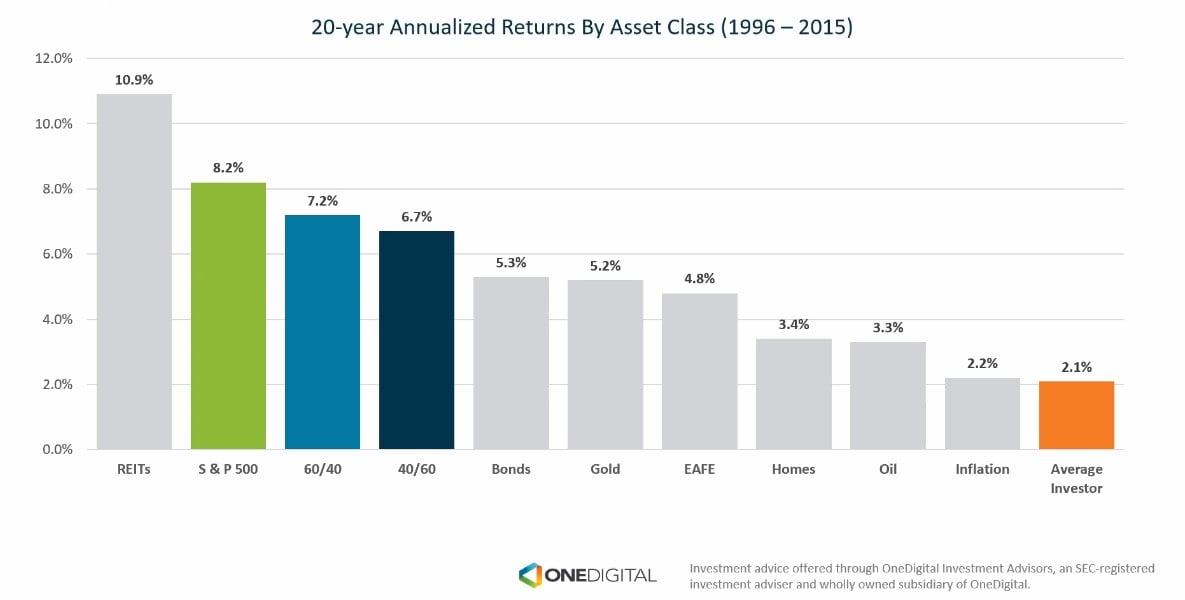
S&P 500 vs. Average Investor
Today's chart comes from OneDigital and shows that the average return for 20-years ending in 2015 was 8.2% for the S&P 500, while the average..
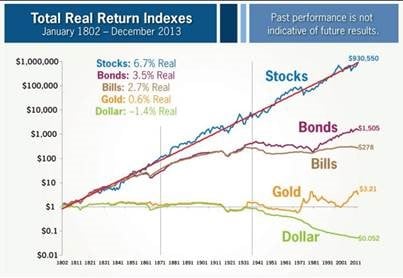
Total Return Since 1802
The following chart from Brian Ferdoldi shows the ultra long-term history of real returns from various asset classes dating back to 1802. Real..
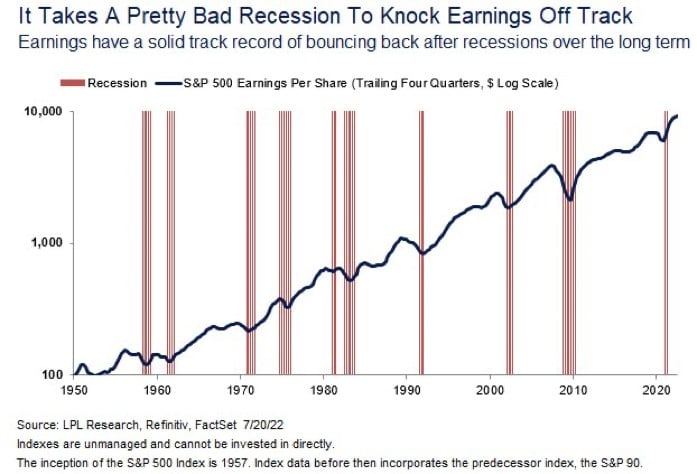
Hard to Hurt Earnings
Today's chart comes from LPL Research and shows the growth of company earnings since 1950. When you buy a stock fund you are purchasing the steam of..
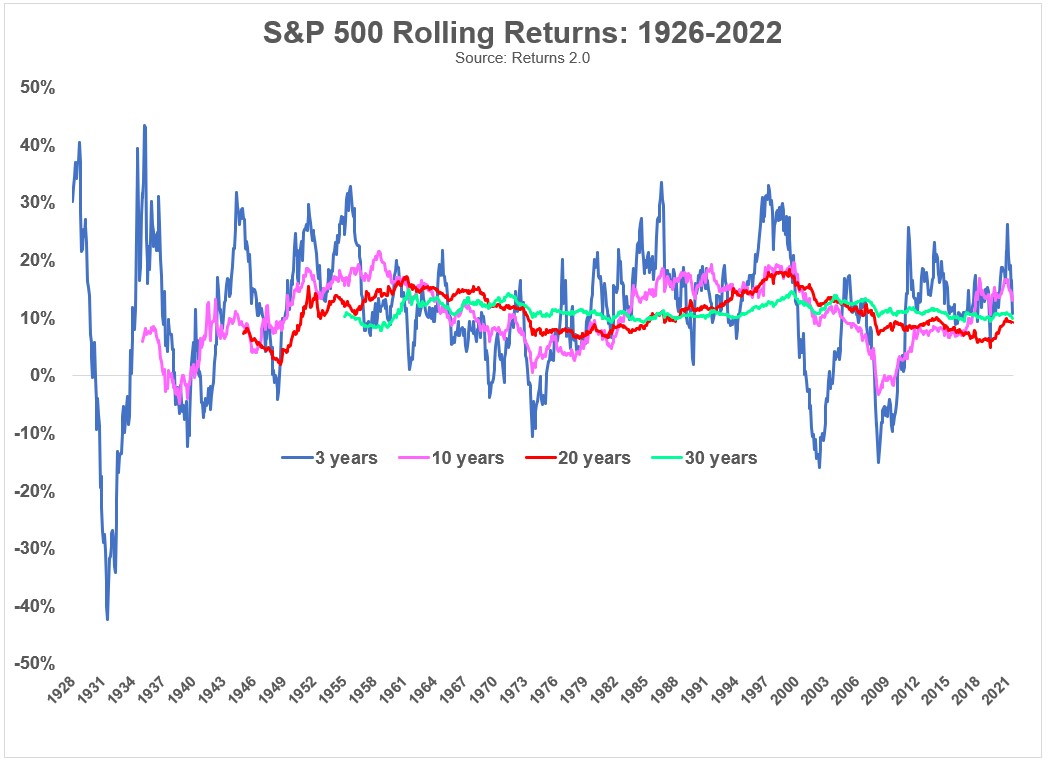
Rolling, Rolling, Rolling
Today's chart is from Ben Carlson’s “A Wealth of Common Sense” which shows the S&P 500’s rolling returns for 3, 10, 20, and 30 year periods going all..
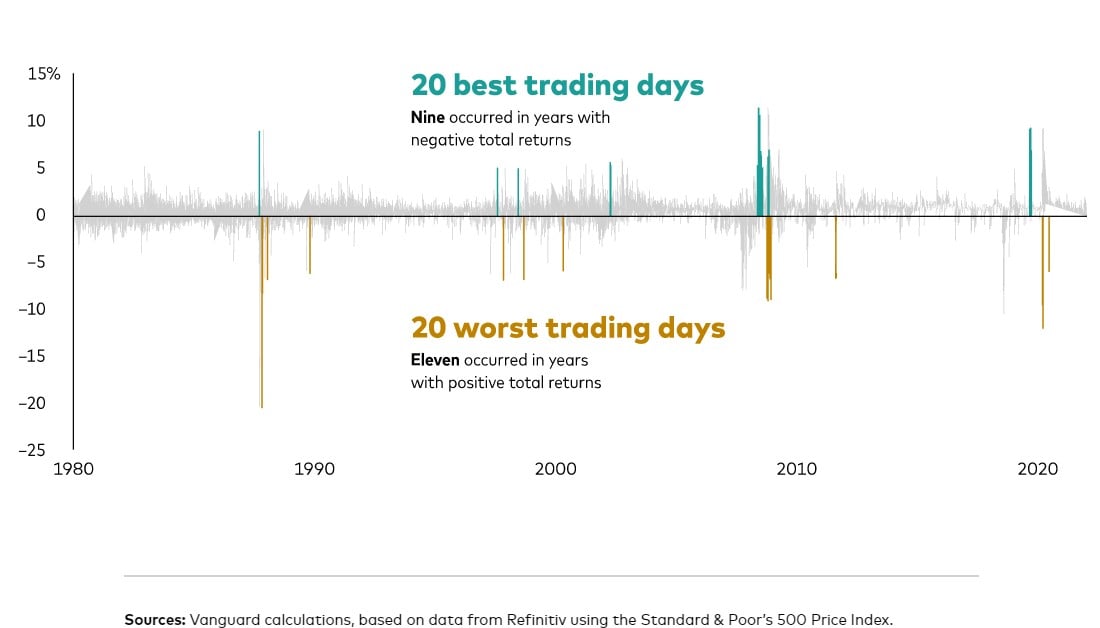
Best and Worst Days are Close
Today’s Chart of the Day comes again from Vanguard. The best and worst trading days are often very close. Usually, when there is a large swing one..
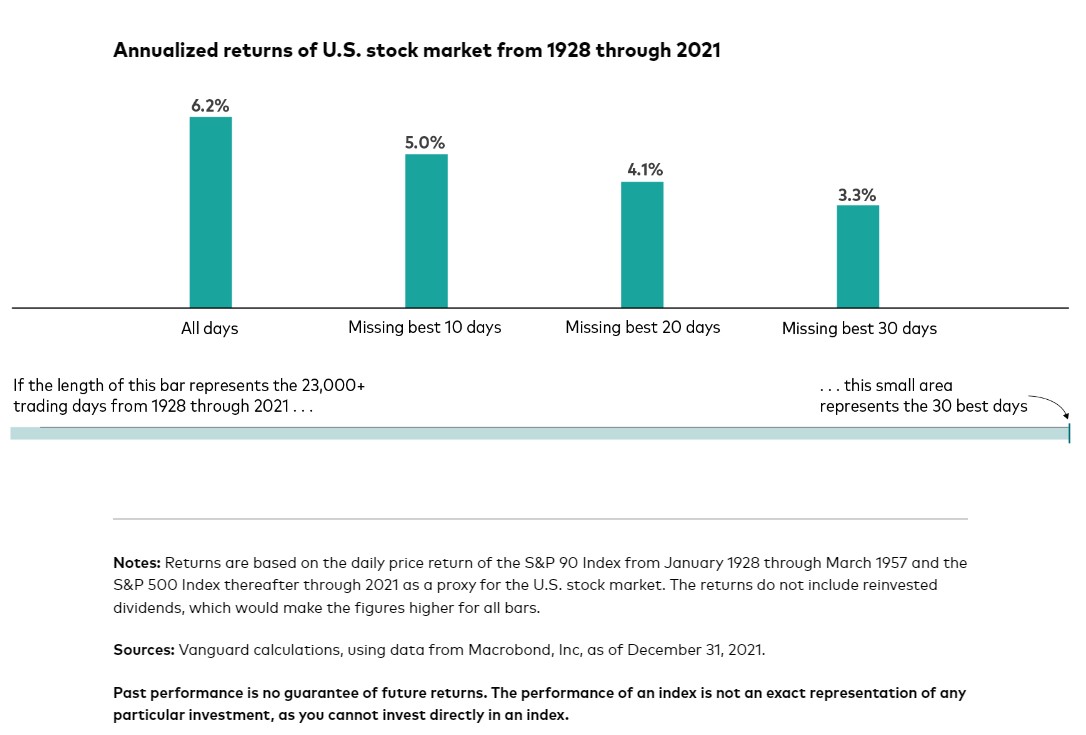
30 Days Equal Half The Return
Today’s chart comes from Vanguard. They wrote a great short article on the difficulties of market timing. In a nutshell, "from 1928 through 2021,..

Prediction for Year End
When asked to predict where the market will be at year end, here are my thoughts:
-1.jpg)
1% Makes a Difference
The two Charts of the Day are from Michael Kitces and show the value of a $100,000 portfolio of 60% stocks and 40% bonds after 30 years with a 4% and..
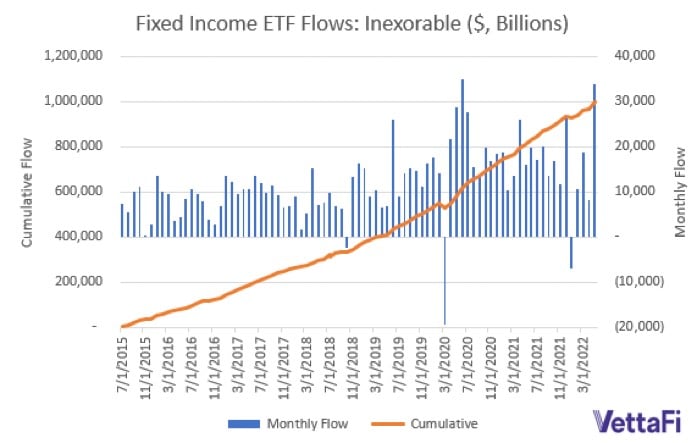
Fixed Income ETFs for the Win
Today’s chart comes from VettaFi. Fixed income exchange traded funds (aka ETFs) have taken in over $1 trillion in assets over the last seven years,..
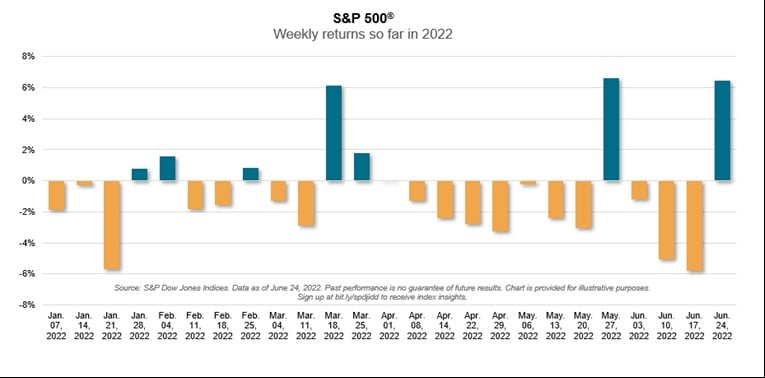
Hold On To Catch the Upside
Today's Chart of the Day is from S&P Global, and it shows the weekly returns of the S&P 500 year to date. Yes, cumulatively the market is down, but..

Recessions are Painful; Expansions are Powerful
This chart comes from the Visual Capitalist. Since 1950, the average economic expansion lasts 67 months. The average recession, though painful, only..
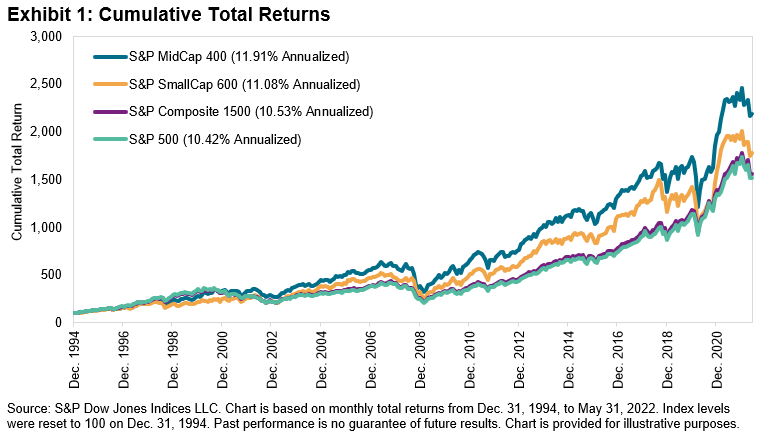
Small- and Mid- vs. Large-Cap Stocks
As of today, small- and mid-cap stocks on a year-to-date basis are performing better than their large-cap counterparts by 3% and 2%, respectively...
On Our Minds
The Shying Away from ESG
Today's chart is from Bloomberg Intelligence, which shows the money flows into ESG (Environmental, Social, and Governance) ETFs since they appeared in 2015.
No More Heydays for Hedge Funds
People may ask, “Why not use hedge funds?” Today's chart comes from Bloomberg and shows us the reason why. In addition to their typical expense ratio of 2% and 20% of gains above a benchmark, hedge funds have consistently underperformed the stock market, denoted by the S&P 500 index, every year since 2014. In fact, they haven’t performed well since their heydays in the 1980s, and even less so since 2007.
S&P 500 vs. Average Investor
Today's chart comes from OneDigital and shows that the average return for 20-years ending in 2015 was 8.2% for the S&P 500, while the average investor only earned 2.1%. The hypothesis is: Too many investors stop investing when the market is down and/or try to time the market.
Total Return Since 1802
The following chart from Brian Ferdoldi shows the ultra long-term history of real returns from various asset classes dating back to 1802. Real returns, the returns after inflation, are important to know due to inflation’s elevated levels.
Hard to Hurt Earnings
Today's chart comes from LPL Research and shows the growth of company earnings since 1950. When you buy a stock fund you are purchasing the steam of their combined future earnings. Yes, that stream can temporarily decline during recessions, but over time the economy and that stream of earnings returns and continues to grow.
Rolling, Rolling, Rolling
Today's chart is from Ben Carlson’s “A Wealth of Common Sense” which shows the S&P 500’s rolling returns for 3, 10, 20, and 30 year periods going all the way back to 1926.
Best and Worst Days are Close
Today’s Chart of the Day comes again from Vanguard. The best and worst trading days are often very close. Usually, when there is a large swing one way, more often than not, the next day swings in the opposite direction. This is why we often do not get too excited when it happens. In fact, when cash needs to be invested or raised for spending, these are usually great days to do so.
Vanguard proved this with today's chart.
30 Days Equal Half The Return
Today’s chart comes from Vanguard. They wrote a great short article on the difficulties of market timing. In a nutshell, "from 1928 through 2021, there were more than 23,300 trading days in the U.S. stock market. Out of those, the 30 best trading days accounted for almost half of the market’s return."
Prediction for Year End
When asked to predict where the market will be at year end, here are my thoughts:
1% Makes a Difference
The two Charts of the Day are from Michael Kitces and show the value of a $100,000 portfolio of 60% stocks and 40% bonds after 30 years with a 4% and 5% initial withdrawal rate. These comments come from Rich Emch, CFP®, Senior Trust Officer.
Fixed Income ETFs for the Win
Today’s chart comes from VettaFi. Fixed income exchange traded funds (aka ETFs) have taken in over $1 trillion in assets over the last seven years, and only had three months of outflows.
Hold On To Catch the Upside
Recessions are Painful; Expansions are Powerful
This chart comes from the Visual Capitalist. Since 1950, the average economic expansion lasts 67 months. The average recession, though painful, only lasts 11 months.
Small- and Mid- vs. Large-Cap Stocks
As of today, small- and mid-cap stocks on a year-to-date basis are performing better than their large-cap counterparts by 3% and 2%, respectively.
There is an ebb and flow but going all the way back to 1994 small- and mid-cap stocks have outperformed large-cap stocks by an annual 0.66% and 1.49%, respectively. Financial theory supports, and so far this year it is also true, that when you add them to your portfolio they lower your risk due to the additional diversification.
Since this follows our motto of obtaining the “highest returns, for the least amount of risk,” we include small- and mid-cap stocks in all our portfolios.
current_page_num+2: 4 - disabled

